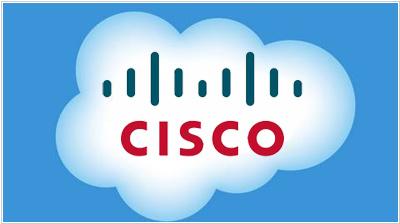
Unless you have been hiding out with no Internet for weeks now, you know the ICND1 and ICND2 exams from Cisco Systems have revved as per usual. Remember, the ICND1 exam gives you a CCENT certification, and then passing the ICND2 gives you a CCNA. If you are feeling really awesome, you can take a single (accelerated) exam option for the CCNA.
If your like me, all you are really obsessed with regarding this announcement is what is on this new test!
Here is the list of topics for you in a nice easy to copy and paste format!
1.0 Network Fundamentals (20% of your exam questions will come from this area)
1.1 Compare and contrast OSI and TCP/IP models
1.2 Compare and contrast TCP and UDP protocols
1.3 Describe the impact of infrastructure components in an enterprise network
1.3.a Firewalls
1.3.b Access points
1.3.c Wireless controllers
1.4 Compare and contrast collapsed core and three-tier architectures
1.5 Compare and contrast network topologies
1.5.a Star
1.5.b Mesh
1.5.c Hybrid
1.6 Select the appropriate cabling type based on implementation requirements
1.7 Apply troubleshooting methodologies to resolve problems
1.7.a Perform fault isolation and document
1.7.b Resolve or escalate
1.7.c Verify and monitor resolution
1.8 Configure, verify, and troubleshoot IPv4 addressing and subnetting
1.9 Compare and contrast IPv4 address types
1.9.a Unicast
1.9.b Broadcast
1.9.c Multicast
1.10 Describe the need for private IPv4 addressing
1.11 Identify the appropriate IPv6 addressing scheme to satisfy addressing requirements in a LAN/WAN environment
1.12 Configure, verify, and troubleshoot IPv6 addressing
1.13 Configure and verify IPv6 Stateless Address Auto Configuration
1.14 Compare and contrast IPv6 address types
1.14.a Global unicast
1.14.b Unique local
1.14.c Link local
1.14.d Multicast
1.14.e Modified EUI 64
1.14.f Autoconfiguration
1.14.g Anycast
2.0 LAN Switching Fundamentals (26% of your exam questions will come from this area)
2.1 Describe and verify switching concepts
2.1.a MAC learning and aging
2.1.b Frame switching
2.1.c Frame flooding
2.1.d MAC address table
2.2 Interpret Ethernet frame format
2.3 Troubleshoot interface and cable issues (collisions, errors, duplex, speed)
2.4 Configure, verify, and troubleshoot VLANs (normal range) spanning multiple switches
2.4.a Access ports (data and voice)
2.4.b Default VLAN
2.5 Configure, verify, and troubleshoot interswitch connectivity
2.5.a Trunk ports
2.5.b 802.1Q
2.5.c Native VLAN
2.6 Configure and verify Layer 2 protocols
2.6.a Cisco Discovery Protocol
2.6.b LLDP
2.7 Configure, verify, and troubleshoot port security
2.7.a Static
2.7.b Dynamic
2.7.c Sticky
2.7.d Max MAC addresses
2.7.e Violation actions
2.7.f Err-disable recovery
3.0 Routing Fundamentals (24% of your exam questions will come from this area)
3.1 Describe the routing concepts
3.1.a Packet handling along the path through a network
3.1.b Forwarding decision based on route lookup
3.1.c Frame rewrite
3.2 Interpret the components of routing table
3.2.a Prefix
3.2.b Network mask
3.2.c Next hop
3.2.d Routing protocol code
3.2.e Administrative distance
3.2.f Metric
3.2.g Gateway of last resort
3.3 Describe how a routing table is populated by different routing information sources
3.3.a Admin distance
3.4 Configure, verify, and troubleshoot inter-VLAN routing
3.4.a Router on a stick
3.5 Compare and contrast static routing and dynamic routing
3.6 Configure, verify, and troubleshoot IPv4 and IPv6 static routing
3.6.a Default route
3.6.b Network route
3.6.c Host route
3.6.d Floating static
3.7 Configure, verify, and troubleshoot RIPv2 for IPv4 (excluding authentication, filtering, manual summarization, redistribution)
4.0 Infrastructure Services (15% of your exam questions will come from this area)
4.1 Describe DNS lookup operation
4.2 Troubleshoot client connectivity issues involving DNS
4.3 Configure and verify DHCP on a router (excluding static reservations)
4.3.a Server
4.3.b Relay
4.3.c Client
4.3.d TFTP, DNS, and gateway options
4.4 Troubleshoot client- and router-based DHCP connectivity issues
4.5 Configure and verify NTP operating in client/server mode
4.6 Configure, verify, and troubleshoot IPv4 standard numbered and named access list for routed interfaces
4.7 Configure, verify, and troubleshoot inside source NAT
4.7.a Static
4.7.b Pool
4.7.c PAT
5.0 Infrastructure Maintenance (14% of your exam questions will come from this area)
5.1 Configure and verify device-monitoring using syslog
5.2 Configure and verify device management
5.2.a Backup and restore device configuration
5.2.b Using Cisco Discovery Protocol and LLDP for device discovery
5.2.c Licensing
5.2.d Logging
5.2.e Timezone
5.2.f Loopback
5.3 Configure and verify initial device configuration
5.4 Configure, verify, and troubleshoot basic device hardening
5.4.a Local authentication
5.4.b Secure password
5.4.c Access to device
5.4.c.i Source address
5.4.c.ii Telnet/SSH
5.4.d Login banner
5.5 Perform device maintenance
5.5.a Cisco IOS upgrades and recovery (SCP, FTP, TFTP, and MD5 verify)
5.5.b Password recovery and configuration register
5.5.c File system management
5.6 Use Cisco IOS tools to troubleshoot and resolve problems
5.6.a Ping and traceroute with extended option
5.6.b Terminal monitor
5.6.c Log events
Hello Anthony,
Will you be having a nugget created for 100-105 ?
Thanks
Yes – we will create three courses for 100-105. The “normal” course, an exam-walkthrough course, and a “real world” course.